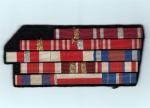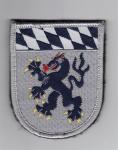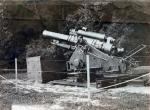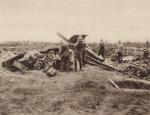Hardy, agreed; the gun tube is still present, but is in a position we gunners call "out-of-battery". Out-of-battery means the cannon tube is not forward in its proper firing position. This usually occurs when there is a malfunction of the recoil mechanism and the tube stays to the rear rather than recoiling forward into a position to be fired again. If you try firing a gun out-of-battery, it will cause significant damage. You can also take a cannon tube out-of-battery deliberately to perform maintenance on the recoil system.
Since the 9.2 Heavy Howitzer was so large, it had to be transported in separate loads; the cannon tube being one separate and distinct load from the carriage. Therefore, it was normal (and probably relatively easy) to take the cannon tube out-of-battery for disassembly and transport. There was some type of retaining mechanism that allowed the cannon tube to be disassembled, but also kept the gun in-battery for firing. I'm guessing that the British gunners removed this retaining mechanism, allowing the guns to come out-of-battery - and therefore, be not able to fire - before they abandoned the position.
I don't have any images of the 9.2 Heavy Howitzer in my own collection, but here is one from the web showing the cannon tube in-battery and ready to fire. In this picture you see there is a distinct connection between the breech block and the recoil tube on top of the cannon tube sleeve. This connection is missing on your photo. The retaining mechanism (looks like a large nut on on the rear end of the recoil tube) connects the end of the recoil tube to the breech block. The guns in your photo are not connected in this way; the nut appears to be missing and therefore, the guns are out-of-battery and not able to fire, even though the cannon tubes are intact.
Also, the gun was loaded while the tube was forward in-battery; not to the rear as shown in your pictures. There was a little winch to raise the round to the breech.












